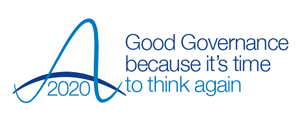Engaging with the hard-to-reach
22 June 2020

COVID-19 has seen an impressive response from the public sector, which has adapted quickly to continue providing essential services. However, in the haste to innovate and launch new solutions there is a risk that some people in our communities are left behind.
Hard-to-reach groups tend to be those that are invisible to boards or underrepresented, that use public services but are difficult to engage in public discussion, so their needs aren’t heard or considered. They are often minority groups who find it harder to access services and for whom services may not suitable, such as people with disabilities, people from non-white ethnic backgrounds, the elderly, and those on lower incomes.
Impact of COVID-19
Public Health England research has shown that the number of cases and diagnosis rate of COVID-19 is highest among those living in the most deprived communities. Alongside this, non-white groups are almost three times more likely to be diagnosed with COVID-19.
As well as ‘traditional’ under-represented groups, gaps have widened further because of the digital divide. While many organisations have successfully adapted engagement to run via digital platforms during the pandemic, 6.6% of UK households without a permanent internet connection are being left behind. With little or no way to engage, bigger gaps are forming.
As outlined in a previous bulletin on citizen engagement, public health and other goals are best achieved when citizens feel engaged, connected with and have buy-in and trust. Improved engagement with hard-to-reach groups really matters because it will dramatically improve outcomes, in health and across the public sector.
Opening up engagement
When reflecting on engagement with the hard-to-reach, it is important to consider the language used to describe them. Hard-to-reach implies that engagement is lacking because they don’t want to be reached. However, in the vast majority of cases, the communities are hard to engage because a level of trust and representation hasn’t been built between the public body and the community. So we should ask ourselves, what can we do to open up engagement?
Boards should start by researching and understanding their own hard-to-reach groups. Look at the make-up of your locality and the communities you serve to understand where you should focus. Once you have this information, be clear about which groups you need to target and what you want to achieve by engaging with them.
Hard-to-reach groups aren’t all the same; consider each of them and develop different and appropriate strategies to engage. To be successful you should react differently to the distinct circumstances and characteristics of each group.
Information about communities should already exist, so identity where you can get good quality and reliable information to help devise your strategy. Local authorities and water companies hold a huge amount of information about communities. Working collaboratively with other public sector bodies could be advantageous here – sharing knowledge and contact points with groups. Also consider the voluntary sector and their connections with local communities.
Engagement ingredients
Once you know who your hard-to-reach groups are, how do you engage with them? Consider the following steps:
1. Build trust – show that you’re listening by inviting people, traditionally hard-to-reach, to be involved in surveys and focus groups
2. Strive for representation – look to build diversity of background and mind on key committees - not just with engagement but also at the point decisions are made.
3. Engage with respected community leaders – work with those who are most able to engage and use their influence.
4. Learn about the groups – take the time to understand the key dynamics of groups and shift your approach according to this insight.
5. Find a form of engagement that works for different groups and individuals – consider a wide range of potential channels including visual, audio, online and, where possible, face-to-face engagement. Make it easy to engage with your organisation.
6. Go beyond digital engagement – consider the digital divide and what this means for your communities.
7. Make it beneficial to the communities you engage with – always engage on the benefits of engaging. And first engage on matters that are of most concern to the people you are trying to reach.
Questions for boards
- Do we have diverse representation of people feeding into key decisions?
- Do we know all of the communities we serve and are we effectively engaging with them all?
- Do we understand the communities we serve and what input they should have to our services?
- Are we considering a broad range of ways to engage, both digitally and using more traditional methods?
Don’t forget, you won’t be able to do all of this without engaging with hard-to-reach groups. Engage early and involve all the people in your community in the evolution of your programme of work.
Boards have a responsibility to engage fully with the communities they serve. Failing to do so comes at a cost – to finances, reputation, resources and most tragically, to lives.
If you have any questions or comments about this briefing, please call us on 07732 681120 or email advice@good-governance.org.uk.
Stephen McCulloch
Director of Communications
